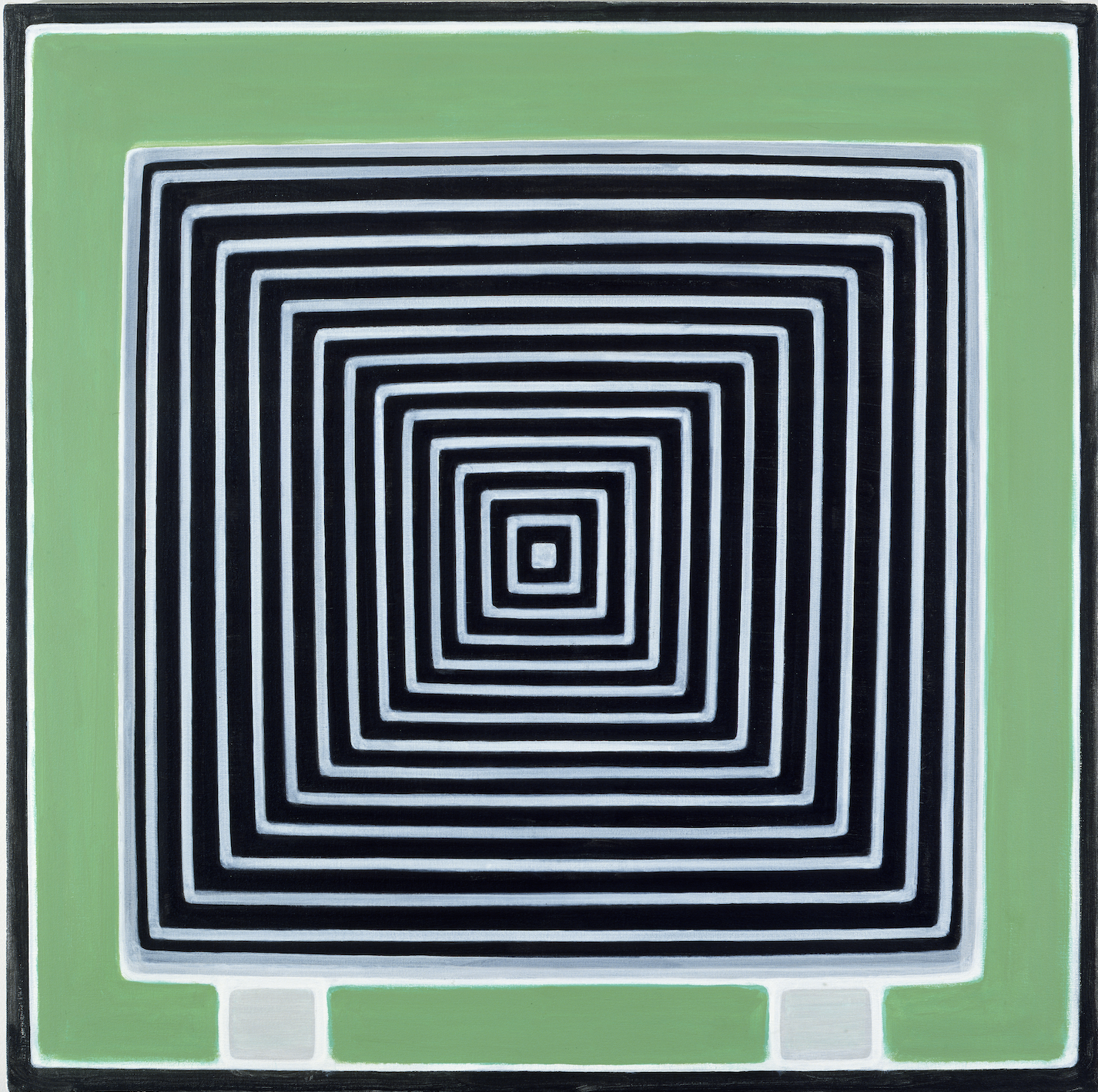buying approaches
Dan Walsh. Composite, acrylic on canvas, 2003.
Markets and mazes
From its beginnings in 15th century Antwerp at biannual markets that often lasted for six weeks to the emergence of auction houses in the late 1700s, the art market was rather staid. The economic distance between sellers and buyers was short with few middlemen. By the late 18th century, a new class of entrepreneurs emerged, women and men who were artists’ agents, private dealers, early speculators, and gallerists. In Post-War Europe, the market expanded gradually and cautiously. The United States—specifically New York—replaced Paris and London as the epicenter of art commerce where galleries were few and largely conventional.
The rise of auctions and fairs
Following the 1973 auction of the Robert C. Scull Collection at Sotheby Park Bernet, the art market changed, spurring financial speculation and glamorizing social mobility through “culture.” The art market was no longer “ordinary” retail. It was a tight, cozy commercial sector—with injections of celebrity, scandal, and exceptional wealth unleashed by Ronald Reagan’s tax cuts—until the expansion of art fairs and the more recent introduction of the Internet and technology in the 1990s. These were game-changers.
Collectors became consumers, often anonymous ones. Buyers could simultaneously have 3, 4, or more roles in the market web, which was made easier by its lack of transparency and the absence of regulation. Collectors became owners of auction houses, guarantors of works at auction; co-owners of individual works of art collaborating with artists, galleries and private dealers. Collecting and connoisseurship were shaped by wealth and dominated by fad and fashion.
The art market became a multi-billion dollar industry. Its financial dimensions are estimates at best. Statistica suggested the global art market was about $65 billion in 2023, which was less than half the size of the $147 billion entire pet industry in the United States. This same 2023 market estimate includes everything from antiquities to NFT’s, irrespective of sales channel, from auctions houses and art galleries to Internet transactions and private deals.
But the number of collectors who spend more than $50,000 annually is probably fewer than 200,000 globally. Plus, the art market remains dominated by North Americans and Europeans. New market entrants—whatever their preferred market channel, identity, or nationality—remain outside of the broader market and competitive discourse. Change is slow, and change is cultural. (The Art Basel & UBS Survey of Global Collecting 2024 is available for download.)
More a maze than market; more a market than a world
The art world is different.
It’s populated by all manner of beings—earthly and otherworldly—who participate less in the nuts-and-bolts art business and more in the dizzying whirl of vernissages, air kisses, fairs, and galas. Invariably, what gets our attention is a heady elixir of money, celebrity, and power. Few other industries catapult their stars so quickly and then let them fail so hard and fast.
